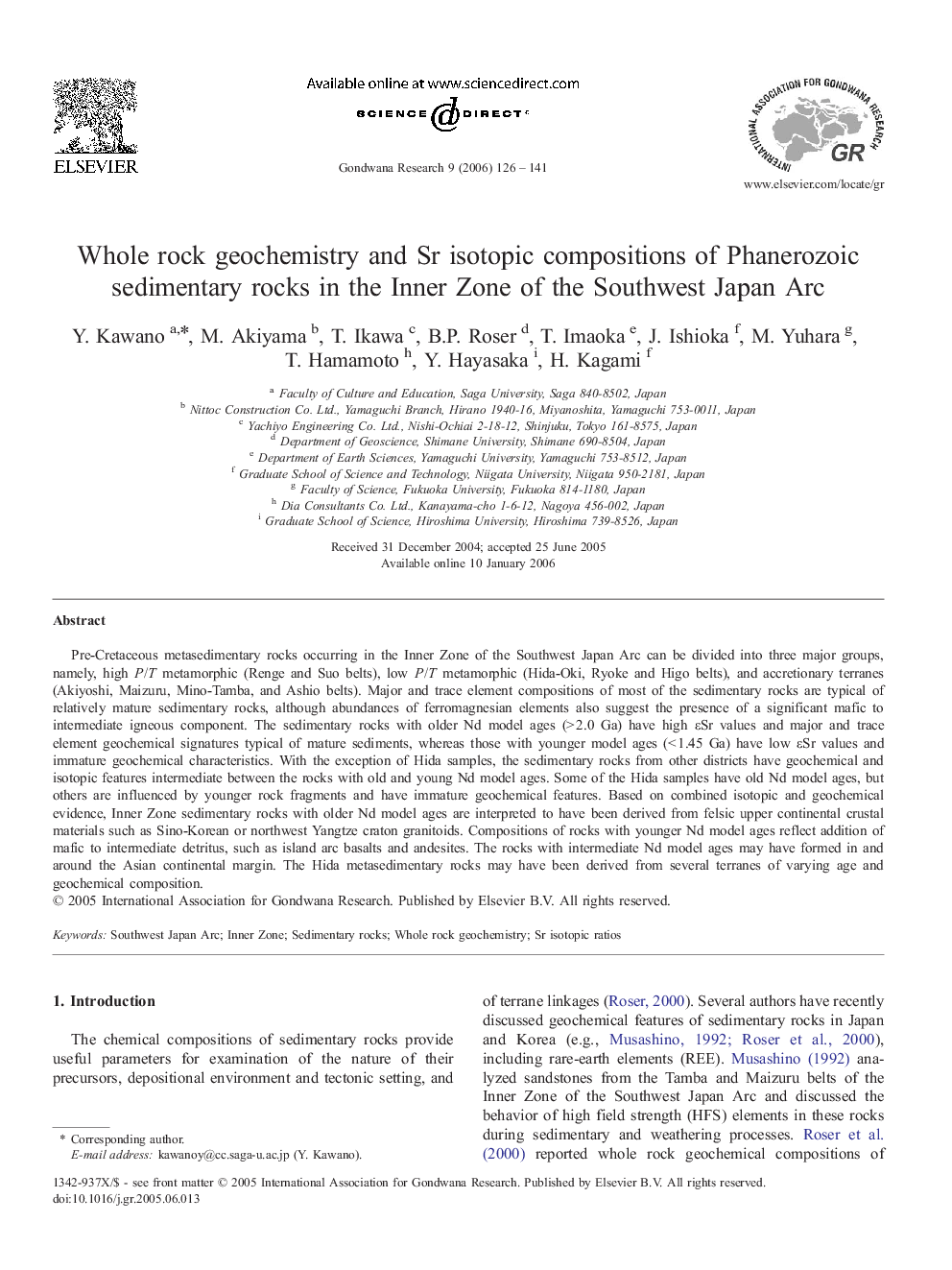| Article ID | Journal | Published Year | Pages | File Type |
|---|---|---|---|---|
| 4728026 | Gondwana Research | 2006 | 16 Pages |
Pre-Cretaceous metasedimentary rocks occurring in the Inner Zone of the Southwest Japan Arc can be divided into three major groups, namely, high P/T metamorphic (Renge and Suo belts), low P/T metamorphic (Hida-Oki, Ryoke and Higo belts), and accretionary terranes (Akiyoshi, Maizuru, Mino-Tamba, and Ashio belts). Major and trace element compositions of most of the sedimentary rocks are typical of relatively mature sedimentary rocks, although abundances of ferromagnesian elements also suggest the presence of a significant mafic to intermediate igneous component. The sedimentary rocks with older Nd model ages (> 2.0 Ga) have high εSr values and major and trace element geochemical signatures typical of mature sediments, whereas those with younger model ages (< 1.45 Ga) have low εSr values and immature geochemical characteristics. With the exception of Hida samples, the sedimentary rocks from other districts have geochemical and isotopic features intermediate between the rocks with old and young Nd model ages. Some of the Hida samples have old Nd model ages, but others are influenced by younger rock fragments and have immature geochemical features. Based on combined isotopic and geochemical evidence, Inner Zone sedimentary rocks with older Nd model ages are interpreted to have been derived from felsic upper continental crustal materials such as Sino-Korean or northwest Yangtze craton granitoids. Compositions of rocks with younger Nd model ages reflect addition of mafic to intermediate detritus, such as island arc basalts and andesites. The rocks with intermediate Nd model ages may have formed in and around the Asian continental margin. The Hida metasedimentary rocks may have been derived from several terranes of varying age and geochemical composition.
